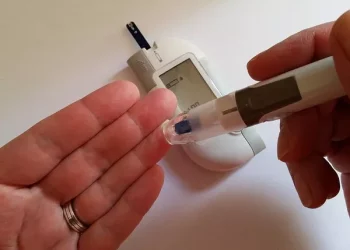In the realm of diabetes management, monitoring blood sugar levels is a fundamental aspect of maintaining glycemic control and preventing complications. Two primary methods used for assessing blood glucose status are traditional glucose testing and Hemoglobin A1c (HbA1c) measurement. While both provide valuable insights into an individual’s glycemic status, they differ in their scope, methodology, and clinical implications. In this comprehensive article, we delve into the fundamental distinctions between glucose testing and HbA1c measurement, elucidating their roles in diabetes management and highlighting their respective strengths and limitations.
Understanding Glucose Testing:
Glucose testing, also known as blood glucose monitoring or self-monitoring of blood glucose (SMBG), involves measuring the concentration of glucose in the bloodstream at a specific point in time. This method typically requires a glucose meter and a small sample of blood obtained through fingerstick or alternate site testing. Glucose meters utilize enzymatic reactions to quantify blood glucose levels, providing real-time data on glycemic status.
Key Aspects of Glucose Testing:
- Temporal Resolution: Glucose testing offers immediate feedback on blood sugar levels at the time of testing, allowing individuals with diabetes to monitor fluctuations throughout the day and make timely adjustments to their treatment regimens.
- Measurement Units: Glucose levels are expressed in units of milligrams per deciliter (mg/dL) or millimoles per liter (mmol/L), providing a numerical value that indicates the concentration of glucose in the bloodstream.
- Clinical Application: Glucose testing is integral to day-to-day diabetes management, helping individuals monitor their glycemic control, identify patterns and trends, and make informed decisions about medication dosing, dietary choices, and physical activity.
Understanding HbA1c Measurement:
HbA1c measurement provides a comprehensive assessment of average blood glucose levels over the preceding two to three months. Hemoglobin, a protein found in red blood cells, binds to glucose molecules in the bloodstream to form glycated hemoglobin. The percentage of glycated hemoglobin reflects the average blood glucose levels over the lifespan of red blood cells, which is approximately 120 days.
Key Aspects of HbA1c Measurement:
- Temporal Resolution: Unlike glucose testing, which provides immediate feedback on blood sugar levels, HbA1c measurement offers a retrospective assessment of average glycemic control over several weeks to months. It reflects both fasting and postprandial glucose levels and is less susceptible to short-term fluctuations.
- Measurement Units: HbA1c levels are expressed as a percentage of total hemoglobin, with higher percentages indicating higher average blood glucose levels over the preceding two to three months. For example, an HbA1c level of 7% corresponds to an average blood glucose level of approximately 154 mg/dL.
- Clinical Application: The HbA1c test serves as a valuable tool for assessing overall glycemic control and treatment adherence in individuals with diabetes. It guides treatment goals, risk stratification, and interventions to prevent long-term complications associated with diabetes.
Key Differences Between Glucose Testing and HbA1c Measurement:
While both glucose testing and HbA1c measurement offer insights into glycemic control, they differ in several key aspects:
- Temporal Resolution: Glucose testing provides real-time information about blood sugar levels at a specific point in time, whereas HbA1c measurement offers a broader assessment of average glycemic control over several weeks to months.
- Measurement Method: Glucose levels are measured directly using enzymatic assays or spectrophotometry, whereas HbA1c levels are indirectly measured through immunoassays that quantify the percentage of glycated hemoglobin in the blood sample.
- Clinical Application: Glucose testing is used for day-to-day management of diabetes, whereas HbA1c measurement is used to assess overall glycemic control and treatment adherence over time.
Clinical Utility and Implications:
Both glucose testing and HbA1c measurement play crucial roles in diabetes management and offer valuable insights into glycemic control and health outcomes:
- Glucose Testing: Regular monitoring of blood glucose levels helps individuals with diabetes track their glycemic control, identify patterns and trends, and make informed decisions about treatment adjustments, dietary choices, and physical activity.
- HbA1c Measurement: The HbA1c test provides a comprehensive assessment of average glycemic control over several weeks to months and guides treatment goals, risk stratification, and interventions to prevent long-term complications associated with diabetes.
Conclusion:
In conclusion, glucose testing and HbA1c measurement are integral components of diabetes management, each offering unique insights into glycemic control and health outcomes. While glucose testing provides immediate feedback on blood sugar levels and guides day-to-day management decisions, HbA1c measurement offers a broader assessment of average glycemic control over time and helps identify long-term trends. By understanding the differences between glucose testing and HbA1c measurement and leveraging their complementary information, healthcare providers and individuals with diabetes can optimize glycemic control, prevent complications, and improve long-term health outcomes.



























